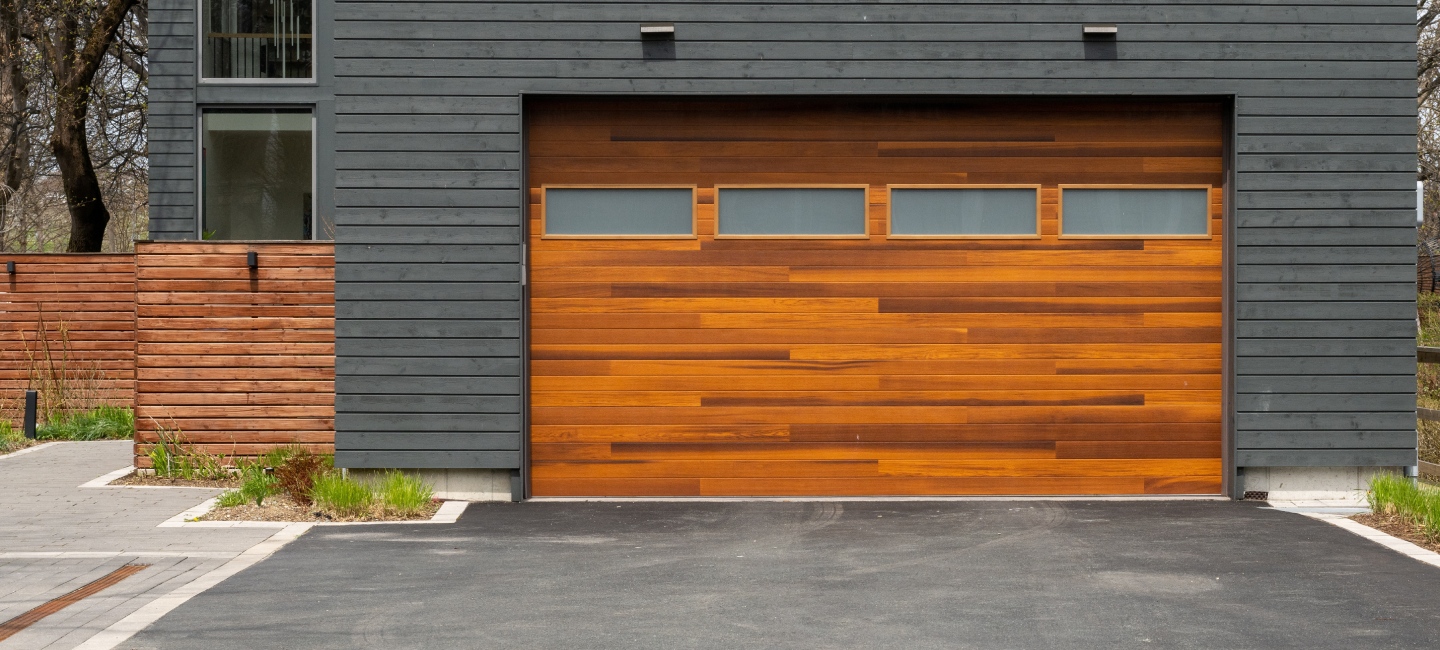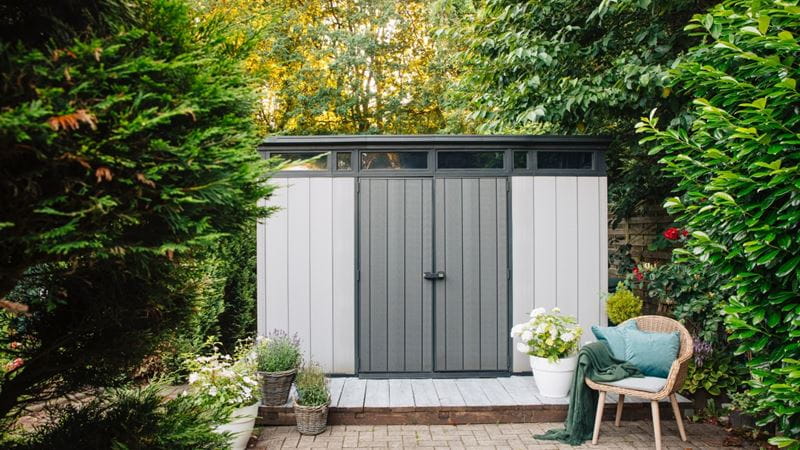
This article is for general guidance only and is not financial or professional advice. Any links are for your own information, and do not constitute any form of recommendation by Saga. You should not solely rely on this information to make any decisions, and consider seeking independent professional advice. All figures and information in this article are correct at the time of publishing, but laws, entitlements, tax treatments and allowances may change in the future.
If your kids have flown the nest, or you’ve got rooms in your house doing nothing...what if they could be bringing in a tidy extra income?
Renting out your spare room to a lodger is one option, but if you don’t fancy taking in a tenant, you could let out the room (or attic, garage or shed) to store other people’s things instead.
Demand for storage is on the rise, particularly in overpopulated cities where space is at a premium, so renting out a spot for others to keep their things could therefore provide a lucrative income.
But while it’s relatively easy to get started, it‘ll require some work on your part, so it’s vital to familiarise yourself with the whole process - including the pitfalls - to avoid any nasty surprises.
The most straightforward way to rent out storage space is through dedicated rental websites that match you with people looking for somewhere to store their belongings.
In the UK, one of the main storage platforms is Stashbee, while Neighbor is based in the US and Spacer is popular in Australia.
Going through one of these sites can make things easier, as they may offer some form of insurance, help with contracts and market your space for you. They’ll usually take a small fee from the transaction between renter and host as part of the deal.
However, the cover offered for compensation if items are stolen or damaged on your property may not be as robust as at professional self-storage facilities.
For example, it only covers items up to £3,000 at Stashbee for an extra cost per month – so it may be worth encouraging those using your storage to consider their own insurance.
You could also go down the DIY route and advertise your storage space in local papers, on social media or through sites such as Gumtree. But this can be riskier as you won’t have the extra security offered by dedicated storage platforms.
Making sure you feel comfortable with the notion of renting out storage space to a stranger is key – if you (or someone you know) may be vulnerable, perhaps consider other options for earning extra income.
One of the biggest issues with renting out storage space in your property is that it involves letting strangers onto your premises – and this might make you feel a little uneasy, particularly if you live alone.
Storage platforms usually include identity verification for renters to give you an extra layer of security. But you should also have your own conversation with potential users of your storage to understand their needs and to establish ground rules.
You might be able to do this directly through the rental platform and it’s key to feeling comfortable with the arrangement. For example, you might only allow renters to access items if you’re at home and after they’ve given 48 hours’ notice.
If you’re worried about letting people onto your property, always think about safety first and it may be that offering storage isn’t for you – or perhaps you could consider having someone around whenever meeting new renters or allowing access.
It’s also crucial to have a robust contract in place in case of any disputes. Again, rental sites will often help you with this, but if you’re going it alone, it’s worth seeking legal advice.
“This way, you're covered on everything from payment terms to item restrictions should anything happen,” says Stashbee’s CEO, David Mantle.
Unsurprisingly, the amount you could earn depends on the type of space you have and your location. You’re likely to earn more if you live in a busy city or have a large space to rent out.
Mantle says: “If you have a spare room or garage, you could potentially earn anywhere between £80 and £373 per month depending on the size and what you’re happy to store, while parking spaces or garages in premium areas can fetch even more - around £110 to £480 per month, depending on your location.”

Renting out storage space could be a great little money earner, but it’s important not to rush into it until you’ve considered all the facts.
Firstly, as a ‘landlord’ of storage space, you have certain responsibilities, such as ensuring the space is suitable for the items being stored.
“You’re responsible for the security and safety of both the property and the belongings of the renters,” explains Saddat Abid, Senior Property Buyer & CEO at property investment firm, Property Saviour.
“This includes setting clear expectations regarding how access will be provided - whether the renter will have 24/7 access or require scheduled times.”
You’ll also need to be clear about what you’re comfortable storing, according to Mantle: “Most platforms have a list of prohibited items that will be sent to potential renters, such as hazardous materials and perishable goods, but you can also set your own restrictions based on what you’re comfortable with.
“For example, only storing cars or DIY items in your garage, or only having items like documents in your spare room or attic.”
Regularly checking the space for signs of damp, mould or pest infestations reduces the risk of damage to the stored items. It’s also advisable to only have one person renting a space at a time, so there’s no confusion over who owns what.
Then there’s the matter of making sure you and the renter are covered in case of any issues. You’ll need to check whether the platform you’re using includes any insurance, what this covers you for and whether it’s sufficient.
Even if it does offer some form of protection, you should still contact your home insurance provider to inform them of your storage plans and make sure it won’t void your existing policy. It might need amending to ensure you’re fully protected.
Additionally, if you have a mortgage, it’s important to speak to your lender to check that your plans won’t breach your mortgage agreement.
First, decide how you’re going to advertise your space. Using a dedicated rental platform gives you additional security compared to doing it yourself and can provide support if something goes wrong – for example, if a renter doesn’t remove their items by the agreed time.
Your next step is to create your listing. You must provide a clear and accurate description of the space, including the size, access details, any rules about usage, the price, and plenty of high-quality photos.
“Make sure you advertise the exact size of the storage space, the times in which the customer can access their storage (including whether they need to notify you), and the security measures that the space has (details about when the room is locked, whether there is CCTV, etc.),” says Dave Sayce, Managing Director and Founder of comparison site Compare My Move.
“If there is a misunderstanding due to lack of transparency, the client could ask for a refund, and it could hurt your chances of getting further clients to store with you.”
Lastly, you should factor in any potential additional costs, such as the cleaning of the space or minor repairs or upgrades to make it more secure.
“Depending on the type of storage, you might also need to invest in items like shelving, dehumidifiers or locks to accommodate your renters’ needs,” adds Mantle.
“You’ll need to factor these into your rental cost, so it’s best to assess what you might need before you start renting to ensure you make a good profit."

There’s billions sitting unclaimed in shares and dividends – find out if any belongs to you.

From their first savings account to their first home, find out how your gifts can make the biggest impact for your grandchildren
.jpg?la=en&h=354&w=616&hash=653168623B92F3457D40ACA115D37B3E)

.jpg?la=en&h=354&w=616&hash=458B0288E9852F4B63A433E2FDD375E7)



We're here to help you make the most with your money. With a rage of financial services designed with over 50s in mind.